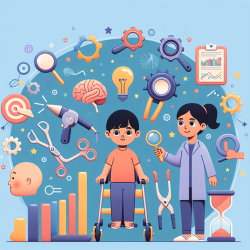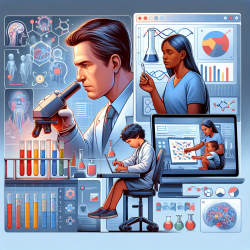As practitioners dedicated to improving the lives of children with cerebral palsy (CP), it's crucial to stay informed about the latest research and therapeutic modalities. A recent study titled Cerebral palsy of the child in rehabilitation environment: epidemiologic and clinical profile and therapeutic modalities provides valuable insights that can help us refine our approaches and enhance outcomes for our young patients.
Understanding the Epidemiologic and Clinical Profile
The study conducted a comprehensive analysis of 50 children diagnosed with CP, focusing on their epidemiologic and clinical profiles. Key findings include:
- Mean age of patients: 7.8 years
- Predominant risk factors: perinatal asphyxia (55%) and prematurity (37%)
- Most common clinical form: spastic CP (74%)
- Severe form: quadriplegia (61%)
- Neuro-orthopedic deformities: present in 78% of cases
Therapeutic Modalities and Their Efficacy
The study highlights various therapeutic modalities used in daily clinical practice:
- Physical therapy: prescribed for all patients
- Dynamic ankle-foot orthosis: most commonly prescribed device (60%)
- Baclofen: prescribed in 5% of cases
- Botulinum toxin injections: performed in 30% of children
These therapeutic interventions aim to improve postural control, joint range of motion, motor control, muscle strength, and mobility. The study also emphasizes the importance of a multidisciplinary approach involving pediatricians, neurologists, physical therapists, and occupational therapists.
Implementing Research Findings in Practice
Based on the study's findings, here are some actionable steps practitioners can take to enhance therapeutic outcomes for children with CP:
- Early Intervention: Early diagnosis and intervention are crucial. Implement systematic screening protocols to identify CP risk factors and initiate therapy as early as possible.
- Multidisciplinary Approach: Collaborate with a team of specialists to provide comprehensive care. This includes regular assessments and tailored therapeutic plans for each child.
- Utilize Advanced Therapeutic Modalities: Incorporate the use of dynamic ankle-foot orthosis and botulinum toxin injections as part of the treatment regimen, as these have shown significant benefits.
- Continuous Education: Stay updated with the latest research and best practices in CP management. Encourage ongoing professional development and training for all team members.
Encouraging Further Research
While this study provides valuable insights, there is always room for further research. Practitioners are encouraged to engage in clinical studies and contribute to the growing body of knowledge on CP. By doing so, we can continue to improve therapeutic modalities and outcomes for children with CP.
To read the original research paper, please follow this link: Cerebral palsy of the child in rehabilitation environment: epidemiologic and clinical profile and therapeutic modalities.










